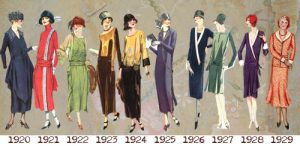300 Jay Street
New York City
11201
5-01-2018
Sir Lilliam Pumpernickel
HathiTrust Project Editor
HathiTrust
1001 North Buhr Building
200 Hill Street
Ann Arbor, MI 48104
Dear Sir. Pumpernickel,
First off, I would like to say how much I appreciate the work that you and your company are doing. Providing a convenient way for users to access knowledge is important for preserving history and culture. I am contacting you today because I believe that with the addition of annotations in the digital version of “Quicksand” by Nella Larsen, the reader would have a better understanding of the text. The specific text I have in mind is regarding the protagonist, Helga Crane, and her resentment towards Christianity because of how it affected slaves in America. By providing an annotation that elaborates on the historical relationship between Christianity and slavery, readers could have a better grasp on the passage.
The text in question is found in chapter 25, page 160. Helga Crane reveals her feelings on Christianity.
“And this, Helga decided, was what ailed the whole Negro race in America, this fatuous belief in the white man’s God, this childlike trust in full compensation for all woes and privations in “kingdom.” Sary Jones’s absolute conviction, “In de nex’ worl’ we’sall recompnse’,” came back to her. And ten million souls were as sure of it as was Sary. How the white man’s God must laugh at the great joke he had played on them! Bound them to slavery, then to poverty and insult, and made them bear it unresistingly, uncomplainingly almost, by sweet promises of mansions in the sky by and by.”
Here Helga Crane expresses her distaste for Christianity (or “the white man’s God”). To Helga, this distaste stems from the unquestioning belief that some black people have in a God that enslaved them and impoverished them, just so that they can be rewarded with an afterlife that is much better than the current life they live. This passage has a lot of historical backgrounds that I feel would benefit the reader if they learned of it. Some readers may find themselves asking: how could Christian slave owners go against their own teachings and still consider themselves religious? What effect did Christianity have on slaves and black people? Why did slaves believe in a white man’s God in the first place?
Slavery was justified by Christian slave masters with the biblical story called “The Curse of Ham”. This story featured Ham who laid his eyes upon the naked body of his father, Noah and encouraged his brothers to join him. Once Noah realized this, he placed a curse on Ham and his descendants, damning them to servitude for eternity. Ham was described as having dark skin and slaves masters saw an opportunity. As Tony Evans puts it in “Are Black People Cursed? The Curse of Ham”: “This myth became an authoritative myth because it was rooted in theology, and slave owners used this twisted theology to sustain a perverted sociology. This process is known as sacralization, the development of theological and religious beliefs to serve the interest of a particular ethnic or racial group.”
Slave masters capitalized on using religion as a way to justify their cruel acts. Many people view the word of God as infallible so very few would doubt the legitimacy of using biblical stories as justification for slavery.
The second question a reader may ask themselves is “What were the effects that Christianity had on the slave/black population?” For W.E.B. DuBois, one of the greatest American scholars, the answer was “complacency”. In his work, “The Souls of Black Folk”, DuBois states the following: “By the middle of the eighteenth century the black slave had sunk, with hushed murmurs, to his place at the bottom of a new economic system, and was unconsciously ripe for a new philosophy of life. Nothing suited his condition better than the doctrines of passive submission embodied in the newly learned Christianity.”
Here the reader can see how Christianity suppressed feelings of rebellion and made the Christian slaves complacent and happy with their “place at the bottom of a new economic system.” By stripping slaves of their fighting spirit, they were much easier to control and much less likely to overthrow their masters.
Finally, a reader may find themselves asking why slaves would continue believing in Christianity despite being treated so poorly (huge understatement). Here, Richard Reddie gives us some answers in “Atlantic slave trade and abolition”: “The Africans who embraced Christianity identified closely with the Bible’s view of freedom, equality and justice and especially drew parallels between their own situation and the Hebrew people in the Book of Exodus…for the Africans it demonstrated that God was on the side of the oppressed and would send a Moses to free them.”
The Christian slaves were able to relate to the enslaved Hebrews in the Bible and believed that God would send a Moses of their own, to liberate them. This is why some slaves still believed in the words of the Christian god.
These are the sources I believe would enhance the reading experience for the reader. By adding annotations to the text, a reader could have a better grasp on why Helga Crane holds her beliefs on the toxic relationship between Christianity and slavery. I hope my examples have encouraged you to add the annotations in the digital version of the book.
Thank you,
Kevin Palomeque




